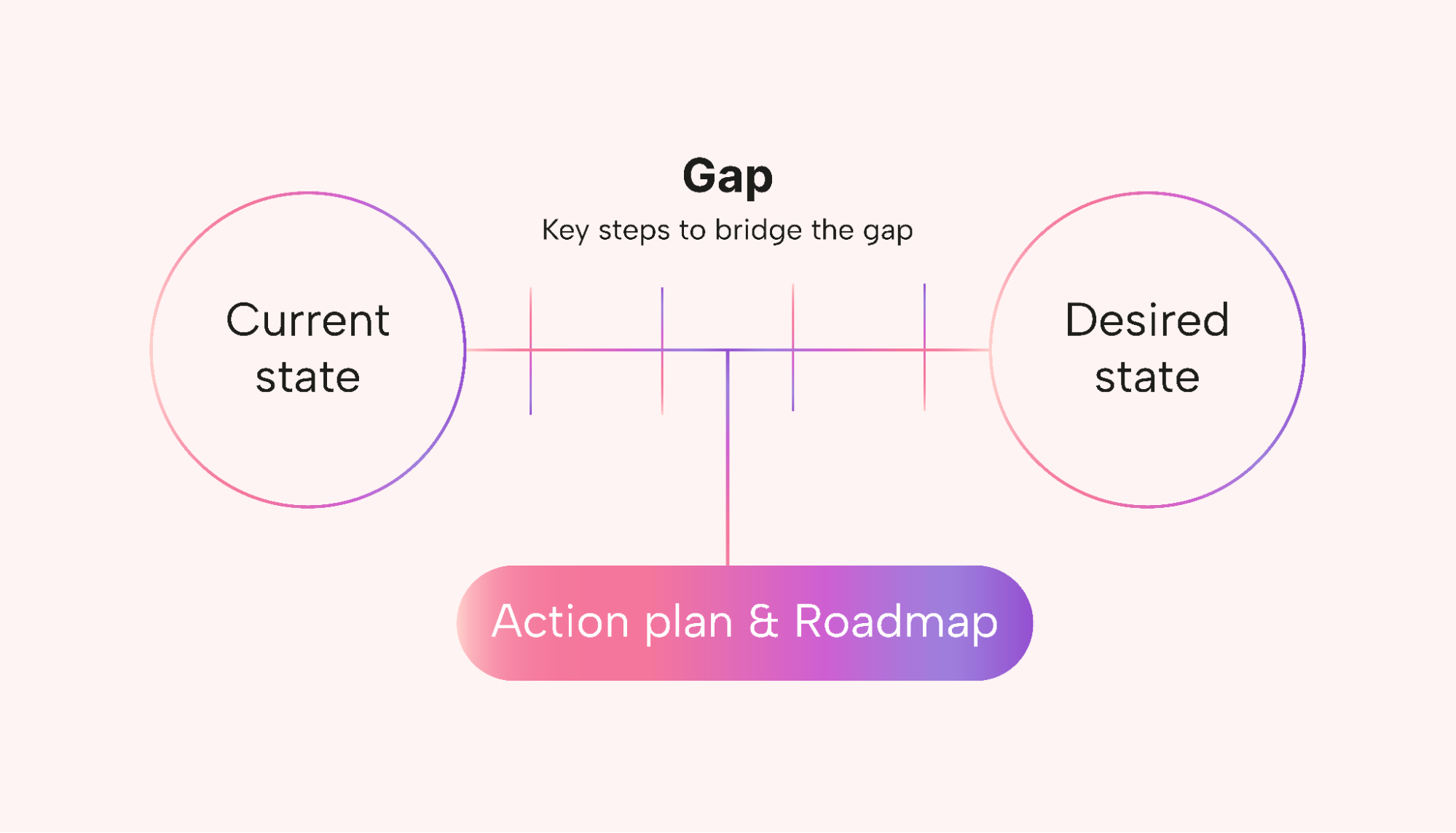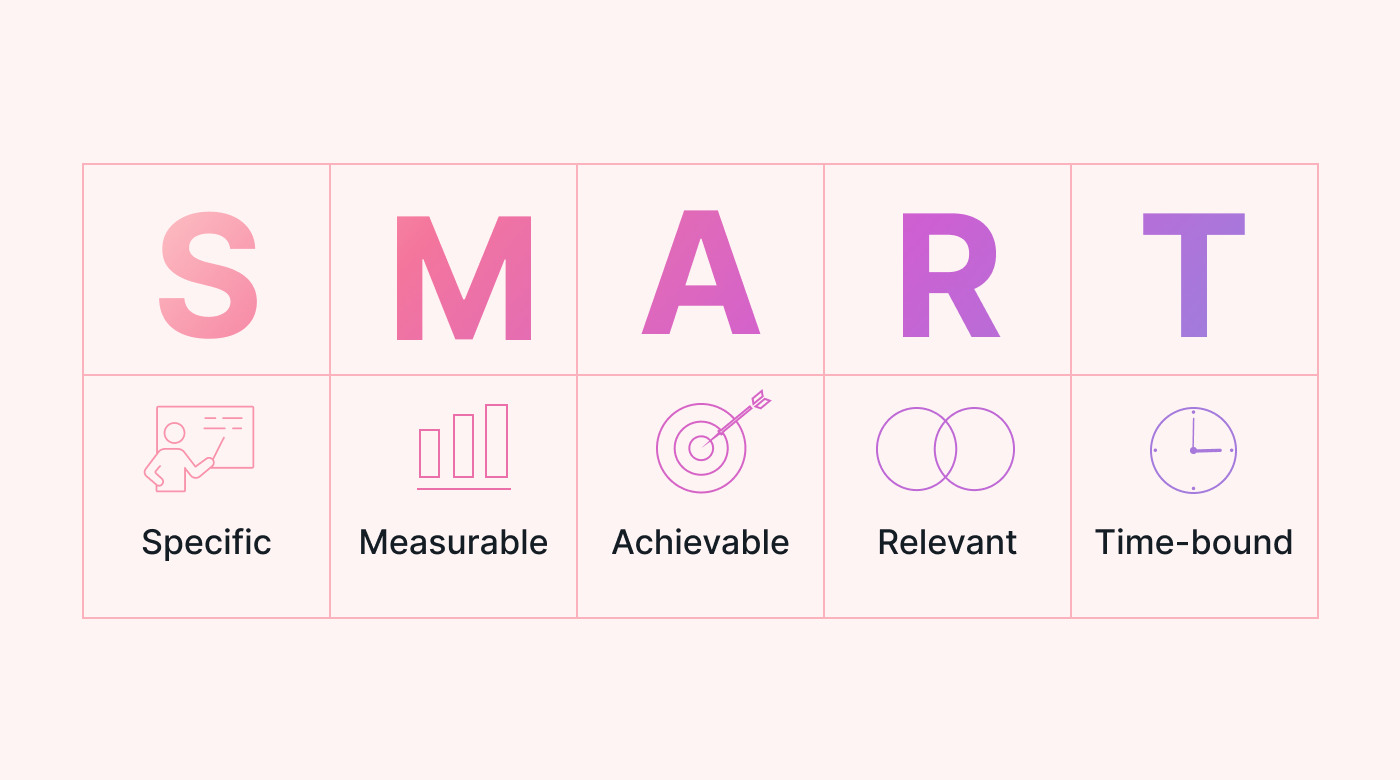Failing to plan is planning to fail.
The implications of poor planning range from simple to severe, such as being late to a stakeholders' meeting by a few minutes or losing a contract, respectively.
Businesses use strategic planning to achieve specific outcomes. For example, a small business might have five-year and 10-year strategic plans. These plans are a roadmap for achieving the desired outcomes.
Strategic plans should be flexible because they may need to change over time. According to a recent report, 64% of the surveyed businesses modified their business strategies over 12 months because of global factors.
If you're running a small business and need a competitive advantage, you should learn to create effective, flexible strategic plans.
In this article, we'll cover:
- What are strategic plans,
- benefits of having effective strategic plans,
- tips for creating effective strategic plans, and
- examples of strategic plans.
What is a strategic plan?
The simplest definition of a strategic plan is a curated roadmap to hit your business goals.
The plan should outline what a business will do to grow from its current to its desired state. It should align with the company’s vision, mission statement, core values, and strategic objectives.
Let's look at Formula 1 (F1) racing to understand how a strategic plan might work.
Each F1 team prepares a strategic plan before race day. However, F1 teams often deviate from their strategies in response to new developments. For example, they may instruct drivers to skip pit stops if they think it'll give them an advantage over other drivers.
This F1 racing analogy extends into the business environment. Businesses often start with well-defined strategic plans but must modify them to respond to market dynamics.
Benefits of strategic planning
Some small businesses overlook the importance of having a strategic plan. Instead, they make short-term plans to adapt quickly to the market. While this may work for some businesses, it's ill-advised. Let's take a look at the key benefits of strategic planning.
Creates a shared sense of responsibility
A strategic plan creates a shared sense of responsibility among stakeholders, where everyone feels they have a personal responsibility for the long-term goals. Take the example of an online cakes and pastries business with a strategic plan to grow its sales by 15% annually. To get there, the business will depend on stakeholder input and productivity. Every employee contributes either directly or indirectly to the business's success.
 |
Provides a clear roadmap
A strategic plan is an action plan. It outlines what the business should do to achieve its strategic goals. Ideally, it should include a vision statement and long-term objectives. The objectives are then broken down into specific goals and tactics for meeting the goals.
Fosters teamwork
Teamwork makes the dream work! However, you can only get people to work together when they have a common purpose. That’s exactly what a strategic plan does. Achieving the vision becomes the shared purpose that can unite employees.
Provides a basis for risk analyses (and management)
A strategic plan is the perfect jump-off point for a risk management plan. For context, a risk management plan identifies potential risks and mitigation strategies for those risks. If a business doesn't have a strategic plan, it's nearly impossible to identify potential roadblocks.
Effective performance tracking
A strategic plan should include key performance indicators (KPIs), which you can use to track performance against the strategic plan. Using the online cakes and pastries store example, they should have KPIs on the number of processed orders, turnover times, etc. These should help the business track its progress toward its goal of increasing its sales by 15% yearly.
6 effective strategic planning tools and techniques
Various tools and techniques can help with strategic planning. Note, that these tools differ in application and focus. Let's take a closer look.
Ansoff Matrix
The Ansoff Matrix is a four-quadrant framework to compare potential strategic plans. The Ansoff Matrix can help you choose between strategies that offer the highest returns at the most manageable risk levels. The strategies are classified into four groups, including:
- Market penetration: The idea is to go deeper into your existing market. This is the least risky strategy because the downside isn't a net negative. An example would be the cakes and pastries business looking to increase its sales in its current markets.
- Market development: This is the next least risky strategy (after market penetration). You can use this strategy to push products to new markets. For example, the cakes and pastries business could decide to open a physical shop for walk-in customers.
- Product development: Businesses can use this strategy to introduce new products to their existing customers. For example, the cakes and pastries business may introduce hot beverages to its product catalog.
- Diversification: Diversification means entering a new market and is the riskiest market extension strategy. It also offers the highest returns when successful. An example would be the cakes and pastries business opening a restaurant.
Blue Ocean Strategy
The Blue Ocean Strategy focuses on differentiation and capturing unoccupied markets. Red Oceans are existing markets or sectors. Businesses often fight and compete to keep their market shares in red oceans. Alternatively, some may carve out a demand for their products in completely new, non-adjacent markets. An example would be the cakes and pastries business going into gyms with low-carb, high-protein snack cakes.
 |
Gap analysis
You use Gap Analysis to compare a current state to a desired state and identifying the pieces (gaps) to get you there.
For example, opening a physical cakes and pastries shop requires capital. The business owner can use Gap Analysis to estimate the required resources and then plan how to raise the required capital.
McKinsey 7-S framework
The McKinsey 7-S Framework is great for implementing change.
For example, employees may oppose process automation if they fear they may lose their jobs. You can use this framework as a holistic approach to change management, which focuses on:
- Structure: Who reports to whom?
- Shared values: What are our mission, vision, and values?
- Skill: What skill sets do we have at our disposal?
- System: Are our workflows and decision-making chains effective?
- Style: What is the senior management's leadership style?
- Staff: How do we manage our talents?
Community Flywheel
The Community Flywheel refers to the idea that you keep your current customers (community) engaged so they won't "churn".
For example, a local grocery store could participate in community events such as weekend farmer's markets to ensure its customers remain endeared to the business.
Note that one-hit tactics don't work for this strategy. You must engage your community continuously.
 |
SWOT analysis
As the acronym implies, SWOT (strengths, weaknesses, opportunities and threats) is an analysis technique that can help you identify what you are doing right and where you could improve.
Some rabbit holes to explore would include:
- Which internal factors give us an advantage (strengths) over our competitors?
- Which internal factors limit our ability (weaknesses) to compete with others?
- Does the external environment offer opportunities we can exploit?
- Does the external environment pose threats that could undermine our survival?
The cakes and pastries business could use it to assess which factors can cause the business to succeed (or fail). They might find that financing is a strength, which could help them expand or diversify.
3 Examples of strategic plans
Strategic plans provide a roadmap for achieving ambitious goals. Note that you may have multiple strategic plans, each addressing specific outcomes. Here ar some examples.
Strategic plan example 1: Increase the company's market share
Goal: Increase sales by 10% over the next three years.
Strategic planning tool: Ansoff Matrix
Suppose a company sells shoes both online and through physical stores. They could use the Ansoff Matrix to identify and classify strategies into four quadrants based on the associated risks. Some practical strategies might include:
- Lower the prices of shoes
- Create family package deals.
- Offer related accessories like cleaning brushes and stain removers.
Lowering the prices of shoes would go into the market penetration quadrant. Introducing accessories like stain removers falls under diversification. Family package deals fall under the product development quadrant. The shoe company should assess its risk appetite to determine which strategy they're willing to implement.
Strategic plan example 2: Customer retention
Goal: Reduce customer turnover (churn).
Strategic planning tool: Community Flywheel.
A great example is Nike's Jordan Brand, which identified its customer community as young consumers aged 20 to 40.
Nike curated its brand story around Michael Jordan, the basketball legend, and put the name into social conversations around basketball. This made the brand a household name within the customer community, which Nike parlayed into other (profitable) ventures.
Strategic plan example 3: Product differentiation
Goal: Create a new market niche.
Strategic planning tool: Blue Ocean Strategy
Take the example of an auto repair shop. Traditionally, car owners take their vehicles to auto repair shops for maintenance and servicing.
The shop could go into a less contested (and more convenient to the customer) market by offering mobile repair and maintenance services. To get started, they could break the value-cost trade off by making mobile services affordable to target customers. Providing affordable services will likely put off profit-driven competitors.
4 tips to help implement a successful strategic plan
Having a strategic plan doesn't translate into (guaranteed) success. You must ensure the strategic plans align with your long-term goals. The strategic plan should also be practical and achievable. Below are some tips for implementing a strategic plan.
Collaborate
The strategic planning team should work with relevant departments and stakeholders to actualize the plan. One way to foster collaboration is by engaging stakeholders during the planning stage. In the bakery example, this could mean involving the entire team and all stakeholders in a preliminary brainstorming session.
Continuously review and update the plan
You should review your strategic plans regularly. Compare current status with expected performance. For example, the bakery business should check its progress regularly (minimum every quarter) to identify challenges like missed orders or late deliveries. As a result, they might have to call on their risk management plan for a mitigation or update their strategic plan accordingly.
 |
Make sure the plan is SMART
One way to measure against strategic plans is by using SMART goals, i.e. specific, measurable, achievable, relevant, and time-bound actionable goals. For example, targeting a 15% increase in sales over 12 months is a SMART goal. It's specific, can be measured, and is time-bound.
Use project management software
Project management software can help you streamline the strategic planning process, including task management visualizations (like Gantt Charts and Kanban Boards) to lay out and track strategic plan activities.
Creating effective strategic plans for your business
Strategic plans are critical for continued success. Your strategic plans should map out the desired goals and define clear ways of achieving them. And don't forget to communicate the strategic plans to your team and relevant stakeholders.
Make your life easier with Motion to help you prepare your strategic plan and track the work as you go.
Try Motion for free today!





